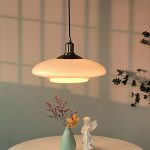What are Light Graphics?
Light graphics refer to the use of lighting effects, colors, and visual elements to create stunning visuals and enhance the overall artistic appeal of a design project. It can be applied to various fields, including advertising, video production, architecture, and digital design, to name a few.
Light graphics often involve the use of 3D models, animations, and simulations to create realistic lighting effects that simulate natural or artificial light sources. It can also incorporate techniques such as lens flares, shadows, and reflections to create a sense of depth and dimensionality to an image or video clip.
The Benefits of Using Light Graphics in Design Projects
The use of light graphics in design projects offers a range of benefits, including:
- Enhanced Visual Appeal: Light graphics can add a high level of visual appeal and artistic flair to any project. It can help to create a more immersive and engaging experience for the audience.
- Better Communication: With the use of light graphics, designers can better convey their message or idea to their intended audience. The visuals can help to emphasize key concepts or create a specific mood or tone.
- Increased Brand Awareness: Light graphics can be used to create a strong visual identity for a brand. By using consistent lighting and visual effects across all branding material, a brand can create a more recognizable and memorable visual identity among its target audience.
- Better Sales Performance: By creating a more immersive and engaging visual experience, light graphics can help to increase sales and conversion rates for products and services.
Examples of Light Graphics in Design Projects
There are many examples of light graphics being used to great effect in various design projects. Here are just a few:
1. Advertising
In advertising, light graphics can be used to create a visually stunning campaign that captures viewers’ attention and creates an emotional response. One example of this is the Johnnie Walker advertisement, ‘The Man Who Walked Around the World,’ which makes use of stunning landscapes, lighting effects, and camera movement to create a powerful emotional journey.
2. Film and Video Production
Light graphics are widely used in film and video production to create a cinematic experience for viewers. In the movie ‘Blade Runner,’ for example, light graphics were used to create a futuristic and stylized aesthetic that is still referenced in modern productions today.
3. Architecture
Architecture is another field that can benefit greatly from the use of light graphics. Architects can use lighting effects to highlight specific features of a building or to create a specific mood or atmosphere in a space. An excellent example of this is the Sydney Opera House, which is illuminated at night to create a stunning visual display.
Getting Started with Light Graphics in Your Design Projects
If you are interested in incorporating light graphics into your design projects, there are a few things you can do to get started:
- Research: Take the time to research different types of light graphics and techniques used in various design projects. Look for inspiration and examples to use in your own work.
- Learn: Take courses or tutorials on how to use lighting and graphics software to create light graphics. Practice using different techniques and tools to enhance the visual appeal of your designs.
- Experiment: Don’t be afraid to experiment with different techniques and styles to create unique and visually stunning designs.
Conclusion
Light graphics can add a new level of visual flair and artistic appeal to any design project. By incorporating lighting effects, colors, and visual elements, designers can create stunning visuals that capture the audience’s attention and convey their message more effectively. Whether you are working in advertising, video production, architecture, or digital design, the use of light graphics can help to elevate your work to the next level.






